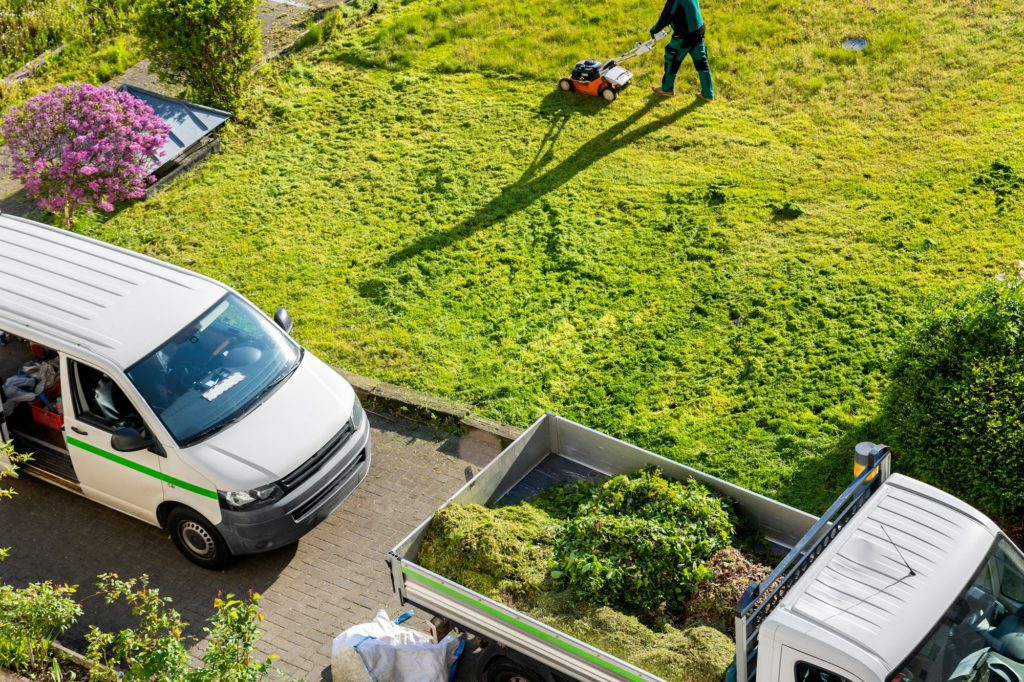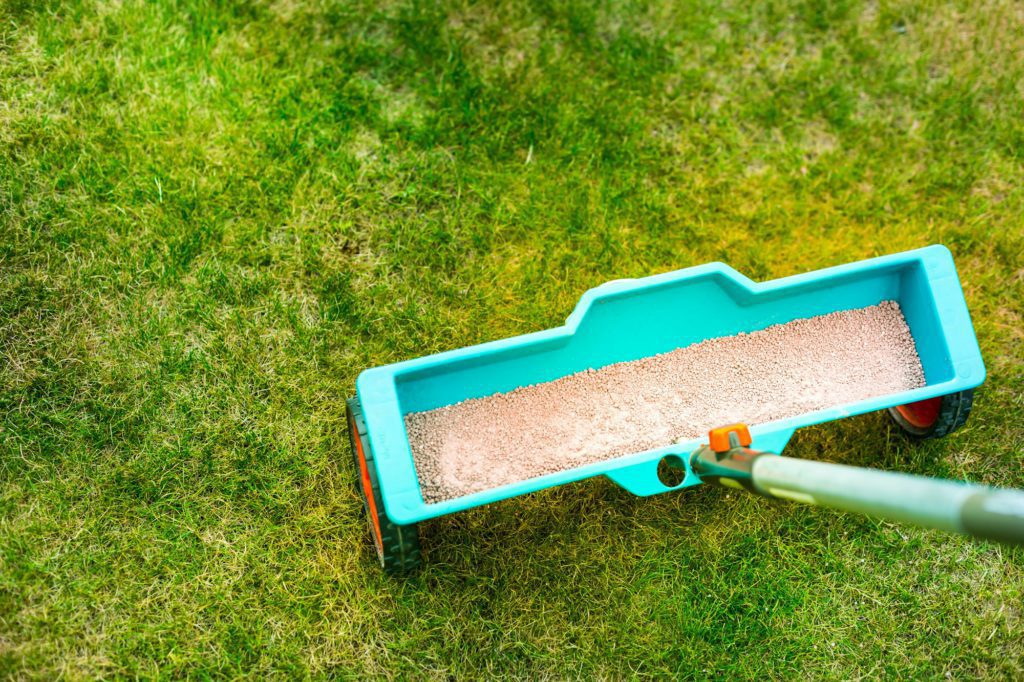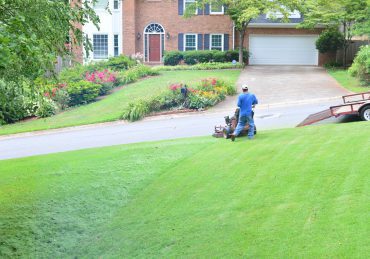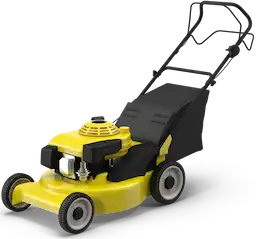Thatch can quietly choke your lawn from underneath. One season it’s just a patch of brown stems, the next it’s blocking water, feeding pests, and stalling grass growth. If you’ve ever noticed your lawn feeling spongy or drying out too quickly after rain, thick thatch could be the culprit.
In this guide, we’ll walk through what lawn dethatching actually means, when it helps, and how to dethatch a lawn without tearing it to shreds. If you’re aiming to keep your yard lush and breathable, here’s where to start.
What Is Lawn Thatch?

Thatch is a layer of dead and living organic material, things like grass clippings, crowns, roots, and stems, that collects between the green part of your lawn and the soil surface. A small amount of thatch (under ½ inch thick) is normal and even helpful. It insulates the soil, protects against foot traffic, and prevents moisture loss.
But once that layer creeps past ¾ inch, it starts to work against your lawn instead of for it.
What Causes Excess Thatch?
Heavy nitrogen fertilization, overwatering, compacted soil, and aggressive grass types like Bermuda, Kentucky bluegrass, and Zoysia all contribute. Lawns that rarely get aerated are also more prone to thick thatch buildup since there’s no mechanical way for soil microbes to help break it down.
What Is the Purpose of Dethatching a Lawn?
The goal of dethatching is to remove that matted layer so air, water, and nutrients can reach the root zone. Without access to the soil, your grass starts sending roots into the thatch instead, which doesn’t hold water or nutrients well and dries out fast.
Done right, dethatching allows your lawn to breathe again. Root systems dig deeper. Fertilizer actually works. You’ll see faster green-up and fewer disease issues throughout the season.
How to Tell If Your Lawn Needs Dethatching
You can’t eyeball it from the street. The best way to tell is by cutting out a small wedge of turf, about 3 inches deep, and measuring the thickness of the spongy brown layer between the soil and the grass blades.
If thatch measures over ¾ inch, you’re in the dethatching zone.
Other warning signs include:
- Water pooling or running off during rainfall
- Mushy feel when walking across the lawn
- Grass turning pale or thin even with regular feeding
How to Dethatch a Lawn Without Causing Damage
Pick the Right Season
Timing depends on your grass type.
- Cool-season grasses (like Kentucky bluegrass, fine fescue, and perennial rye): Dethatch in early spring or early fall, when temps sit between 60–75°F and the grass is actively growing.
- Warm-season grasses (like Bermuda, St. Augustine, and Zoysia): Dethatch in late spring through early summer, just after green-up and before peak heat.
Warning: Dethatching during dormancy or drought can stress grass and thin out your turf permanently. Always schedule it during strong growth periods.
Choose the Right Dethatching Method
The best dethatching tool depends on lawn size and buildup thickness:
- Manual dethatching rake: Works for areas under 500 sq. ft. or thatch under ½ inch. These have stiff, curved tines and require serious elbow grease.
- Power rake: Best for medium yards (up to 5,000 sq. ft.) with moderate thatch. These slice through the lawn surface with rotating blades or flails.
- Verticutter: Ideal for large lawns or thick thatch. These vertical mowers cut through the thatch layer and into the topsoil slightly to loosen roots and stimulate growth.
Reality Check: Renting a power rake costs about $60–$90 per day. If you’re unfamiliar with the machine or worried about damaging irrigation heads, hiring a local pro often saves time and money.
How to Properly Dethatch a Lawn Step-by-Step

- Mow your lawn short. Set your mower to 2 inches or less. This reduces resistance and lets dethatching blades reach the thatch layer cleanly.
- Mark any underground hazards. Sprinkler heads, shallow cable lines, or drip systems should be flagged beforehand to avoid costly damage.
- Run your dethatcher. Move in parallel passes over the lawn, then make a second set of passes at a 45-degree angle. The goal is even coverage, not over-agitation.
- Rake up the debris. You’ll remove more material than you expect. Bag it all, don’t let it suffocate your recovering lawn.
- Water deeply. Give the lawn a good soak to help the roots bounce back.
- Fertilize lightly or overseed. Since dethatching exposes soil, it’s a good opportunity to feed your lawn or seed any bare spots.
Should You Dethatch Every Year?
No, and doing so could do more harm than good. Most lawns only need dethatching every 2 to 3 years. Lawns with sandy soil or slow-growing grasses like fine fescue might go even longer.
Note: If you bag your clippings, avoid overfertilizing, and aerate annually, you’ll likely see minimal thatch buildup.
What Is Dethatching Lawn Equipment Good For?
Powered dethatchers and verticutters are designed for more than just pulling debris. They also:
- Loosen soil near the surface, improving seed-to-soil contact
- Break up root-bound patches in compacted areas
- Stimulate new tiller growth in aggressive grass types
For lawns with heavy thatch and traffic compaction, these tools offer a double benefit.
Aeration vs. Dethatching: Know the Difference
These are not interchangeable.
- Dethatching clears the surface layer so moisture can reach the soil.
- Core aeration breaks up compaction deeper down and promotes better gas exchange in the root zone.
Think of dethatching as unzipping your lawn’s jacket, and aeration as loosening its belt. Most lawns benefit from both, but not at the same time.
Final Thoughts on Dethatching Timing and Cost
Time estimate:
Manual dethatching can take 2–4 hours for a small yard. Powered methods cut that to 30–60 minutes for up to 5,000 sq. ft.
- DIY with a rented power rake: $60–$90/day
- Pro dethatching service: $100–$200 for an average lawn
- Add-ons like overseeding or fertilizing will increase cost
Call in Backup Before Thatch Takes Over
If your lawn’s grown spongy, patchy, or just won’t bounce back after watering, thatch may be holding it back. Knowing how to dethatch a lawn is one thing, doing it properly without harming your turf takes care, timing, and the right tools. You don’t have to figure it out alone.
Whether you rake it out yourself or schedule help, cutting through thatch is the first real step toward a stronger lawn.





